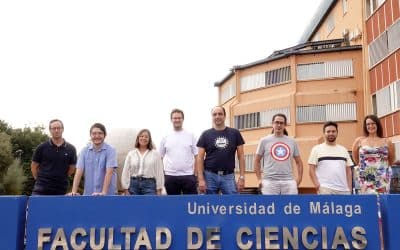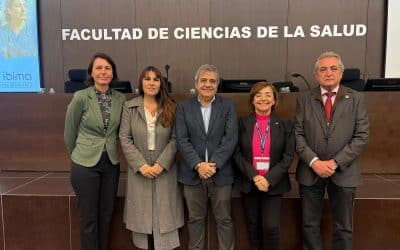Results of research led by Sergio Valdés and Gemma Rojo Martínez, from the Diabetes and Associated Metabolic Diseases area of the CIBER (CIBERDEM) and belonging to the Hospital Regional Universitario de Málaga and the Instituto de Investigación Biomédica de Málaga-IBIMA-Plataforma relationship between blood lipid levels and exposure to air pollutants. This relationship suggests, in turn, a link between air pollution and atherosclerosisThe disease is characterised by the accumulation of fats, cholesterol and other substances inside the arteries and on the walls of the arteries.
The study, which has recently been published in the journal European Journal of Clinical Investigationsuggests that air pollution, traditionally associated with respiratory pathologies, also has harmful effects on the respiratory system. blood lipid levels and can increase the risk of cardiovascular disease.
For the development of the research, we worked with data from 4,647 adults from all over Spain, from the national population-based study di@bet.es, a pioneering CIBERDEM initiative carried out between 2008-2010 and 2015-2017, which measured the prevalence and incidence of type 2 diabetes and other metabolic diseases in the adult population in Spain as a whole.
In addition to a physical examination and blood sampling, the information collected included age, sex, educational level, smoking habits, alcohol consumption, diet (frequency, adherence to Mediterranean diet, etc.), body mass index and daily physical activity, among others. Data on exposure to pollutants were obtained from the work of collaborators at the Centro de Investigaciones Energéticas, Medioambientales y Tecnológicas (CIEMAT).
Specifically, the association was studied for each participating person of the average concentrations of airborne particulate matter pollutants (particles with an aerodynamic diameter of less than 10 or 2.5 microns) from your home in the years of the study and the concentration of nitrogen dioxide in the air.
The results showed a significant association between exposure to various air pollutants and several standard or novel measures of blood lipoproteins, which points to a lipid profile with tendency to atherosclerotic development in people exposed to a higher degree of contamination, and could even indicate a factor of risk for the development or development of cardiovascular disease.
The World Health Organisation has identified air pollution as the greatest environmental health risk worldwide, causing 4.2 million deaths each year, more than half of which are due to ischaemic heart disease and stroke. Air pollution can affect the cardiovascular system through, for example, systemic and pulmonary oxidative stress and inflammation processes or autonomic nervous system dysfunction.
Previous research had shown how alterations in lipid metabolism could be indicative of the association between air pollution and atherosclerosis. The study has gone a step further by analysing not only the lipid level but also the number and size of the lipoprotein particles carrying those lipids in the blood.
In the words of Sergio ValdésThese results represent an important step forward as it is a large population-based research sample, with numerous clinical, demographic and lifestyle variables, as well as including a large number of other variables,’ says the principal investigator. innovative blood lipoprotein measurement methods‘. For her part, the study's coordinator, the researcher Gemma Rojo stresses the importance of improving air quality in our populations to reduce cardiovascular risk.
The national character of the sample allows extrapolating results more reliably than local or regional studies, which increases the value of the results as evidence to be used in public health policies and actions regarding pathologies such as diabetes, which in Spain affects around 15% of the adult population, or cardiovascular diseases, which are responsible for approximately 30% of deaths in our country.
Collaboration of the study teams di@bet.es
In addition to Sergio Valdés and Gemma Rojonumerous CIBERDEM teams have participated in the research: Cristina Maldonado-Araque, Eva García-Escobar, Sara García-Serrano y Wasima Oualla-Bachiri from University Regional Hospital of Málaga e IBIMA-Bionand; Alfonso Calle-Pascual of the Instituto de Investigación Sanitaria Hospital Universitario S. Carlos (IdISSC); Luis Castaño y Sonia GaztambideCruces University Hospital, BioCruces, UPV/EHU, Barakaldo; Josep Franch-Nadal of the Institut Català de la Salut and IDIAP - Fundació Jordi Gol de Barcelona; F Javier Chaves in the Foundation for Research at the Hospital Clínic of the Valencian Community; Joan Carles Vallvé, Montse Guardiola and Josep Ribalta, of the Rovira i Virgili University (URV) IISPV; y Núria Amigó URV-IISPV, and the Metabolomics Platform and the Biosfer Teslab of Reus
Marta García, Juan Luis Garrido, Victoria Gil and Fernando Martín participated on behalf of the Centro de Investigaciones Energéticas, Medioambientales y Tecnológicas (CIEMAT), while José L. Galán and Gabriel Aguilera also participated on behalf of the University of Málaga.



